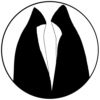PEOPLE LIKE US
Booking: info(@)folkwisdom.net
Since 1991 British artist Vicki Bennett has been working across the field of audio-visual collage, and is recognised as an influential and pioneering figure in the still growing area of sampling, appropriation and cutting up of found footage and archives. Working under the name People Like Us, Vicki specialises in the manipulation and reworking of original sources from both the experimental and popular worlds of music, film and radio. People Like Us believe in open access to archives for creative use. In 2006 she was the first artist to be given unrestricted access to the entire BBC Archive.
People Like Us have previously shown work at, amongst others, Tate Modern, Whitechapel Gallery, The Barbican, Centro de Cultura Digital, Maxxi and Sonar, and performed radio sessions for John Peel and Mixing It. She has an ongoing sound art radio show ‘DO or DIY’ on WFMU. The People Like Us back catalogue is available for free download hosted by UbuWeb. Nothing Can Turn Into A Void – a doc film about People Like Us has been screening in cinemas and festivals since Autumn 2015.
I the recent years Bennett focussed on expanding a/v work for a multiscreen and multi-speakered environment with RML Cinechamber, with 10-screen work “Gone, Gone Beyond”. Also performed live her work “The Mirror”, premiered at Onassis Cultural Centre Athens in Spring 2018. October 2018 saw the release of a new album also called The Mirror. Vicki is a participant in Sound and Music New Voices 2018 programme, a-n Artist Bursaries 2019 recipient, and will be Hallwalls Artist in Residence from 2019-2020.
In 2023 People Like Us will present her next a/v work “The Library of Babel”: using dense collage and splintered narrative, “The Library of Babel” is a journey through cinema and sound where the actors are set adrift from their story, left with pure experience. The title is inspired by a 1941 Jorge Luis Borges short story, exploring themes related to the complex interplay of infinity, knowledge, and the cosmic fabric, presented through the metaphor of a vast, seemingly infinite library. In the story, the librarians are isolated, focussed on an almost religious or existential quest, struggling to find meaningful texts amidst an overwhelming number of nonsensical or irrelevant books. The library itself has no goals or intentions; a canvas onto which searchers project their quests for meaning. The narrative delves into the angst and crises of those that explore its depths, raising questions about our ability to manage, navigate, and find meaning from vast amounts of information.
In this new work by People Like Us, traditional storytelling gets a modern twist through the amalgamation of audio-visual collage and intricate editing techniques. The digital narrative reconfigures, decomposes, redirects, and recombines images with sounds that are often already ingrained in audience’s collective consciousness due to their prior associations within the selected materials. Initially, they sail on a journey of previous associations and memories. However, the extensive fusion of source materials evolve them into a unified whole, severing past affiliations and pioneering uncharted territory that transcends memory to become a singular, immersive experience. Rather than adhering to a linear progression of events, the thematic narrative unfolds in layered complexities, offering a fragmented but coherent tale achieved through a blend of various sources and an ‘exquisite corpse’ approach.
Using collage as a medium democratises the content, making it resonant not just for aficionados of art, film, or music, but for a broad cross-section of the community. The technique is a universal entry point that appeals to both young and old, presenting elements that can communicate varied messages about film, music, culture, or society. Alternatively, the collage can stand alone as an extraordinary experience devoid of an overt narrative. Indeed, the aim is to use storytelling as a tool to transcend the preconceived notions and internal stories that audiences may bring with them.

